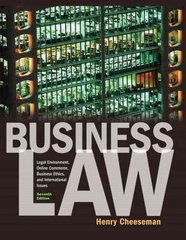Question
A consumer has a utility function of the form u(W) = -e^-Y(constant absolute risk aversion) where Y represents her wealth, expressed in thousands of dollars.
A consumer has a utility function of the form u(W) = -e^-Y(constant absolute risk aversion) where Y represents her wealth, expressed in thousands of dollars. She has an initial wealth of $5,000 (i.e., Y=5) and claims to be indifferent between not betting and making a bet with a 50 % chance of losing $1,000 and a 50 % chance of gaining $1,500.
(o) Is this person risk averse? Risk neutral? What is the value of ? (Take =.3289)
(a) How would this consumer feel about making 3 bets, all of this size?
(b) Now assume that a second consumer who has a wealth of 25,000 and constant absolute risk aversion is indifferent to making a bet with a 2/3 probability of winning $5,000 and a 1/3 probability of losing $5,000. How would this consumer feel about making 3 bets, all of this size? How would the consumer feel about making a $1,000 bet with a 2/3 probability of winning and a 1/3 probability of losing? What is now? (Take =.1386)
(c) An insurance syndicate has 100 stockholders, each with the same utility function as the consumer in (a). Each shareholder owns one percent of the syndicate, and thus gets one percent of the profits or losses on the group's insurance contracts. If the company had a 50 percent probability of making a $1,000 loss on each policy it issued, how much of a profit would it have to earn on the 50 percent of policies where it made a profit, so that its stockholders would be indifferent to the issuance of the policy?
Step by Step Solution
There are 3 Steps involved in it
Step: 1

Get Instant Access to Expert-Tailored Solutions
See step-by-step solutions with expert insights and AI powered tools for academic success
Step: 2

Step: 3

Ace Your Homework with AI
Get the answers you need in no time with our AI-driven, step-by-step assistance
Get Started


